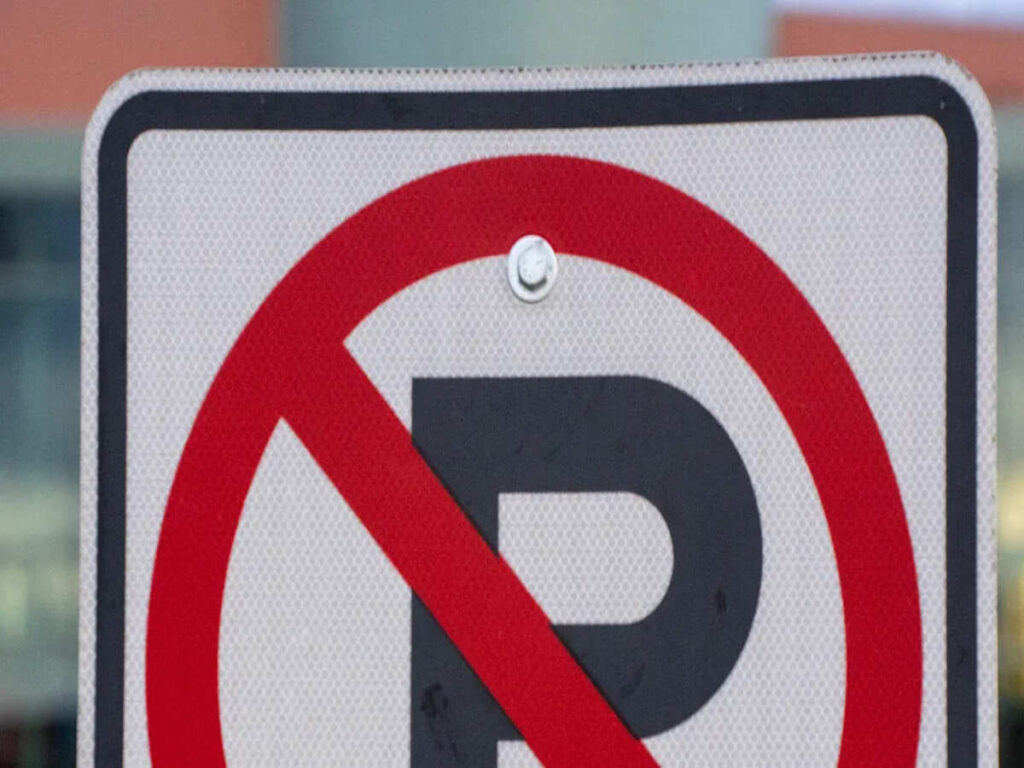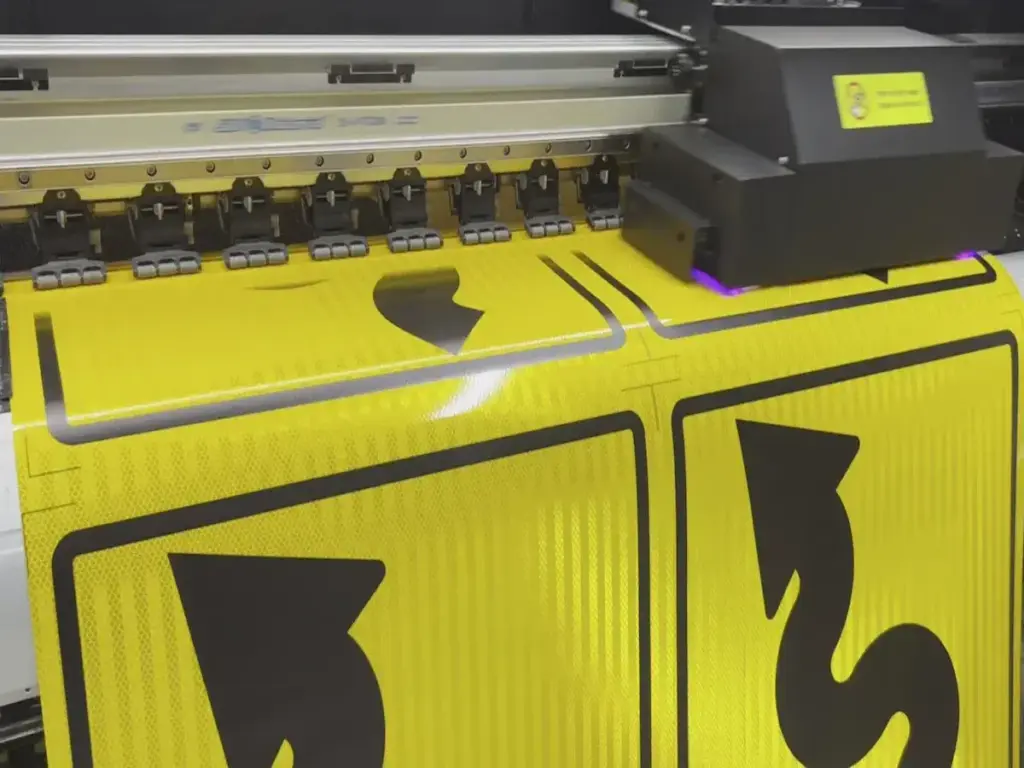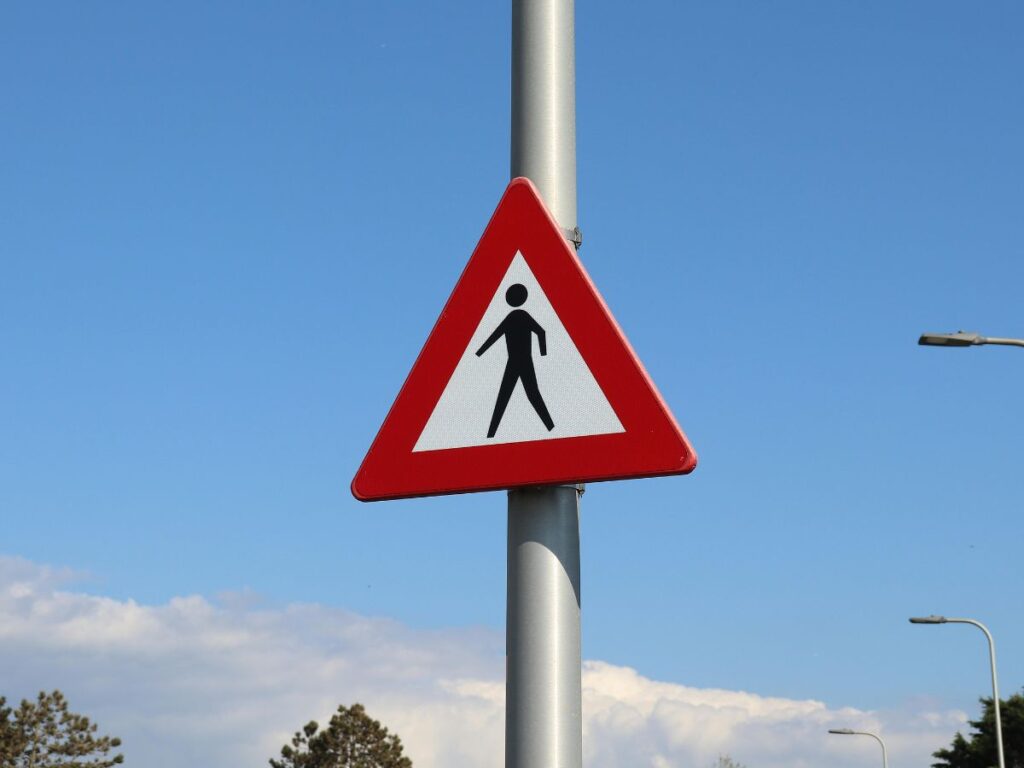
Bases de borracha desempenhar um papel crucial para garantir a durabilidade e a funcionalidade de Cones de trânsito durante o transporte. Essas bases absorvem choques de maneira eficaz, reduzindo o risco de danos causados por impactos ou vibrações. Sua estabilidade impede que os cones de tráfego tombam ou mudem, mesmo em condições de trânsito desafiadoras. Adicionalmente, As bases de borracha são criadas a partir de materiais reciclados, tornando -os uma escolha ecológica. Produtos como Cones de tráfego dobrável com base de borracha e Cones de trânsito de PE com base de borracha Combine praticidade com sustentabilidade, Oferecendo uma solução confiável para as necessidades de gerenciamento de tráfego.
Entendendo o estresse de transporte para cones de trânsito
Transporte O estresse pode afetar significativamente o desempenho e a vida útil dos cones de trânsito. Compreender suas causas e consequências ajuda você a tomar decisões informadas sobre a escolha dos materiais certos, como bases de borracha, Para minimizar esses desafios.
Causas comuns de estresse de transporte
Movimento e mudança durante o trânsito
Os cones de trânsito geralmente mudam ou se movem durante o transporte. Isso acontece quando os veículos encontram estradas irregulares, curvas fechadas, ou paradas repentinas. Sem uma base estável, Cones de tráfego plástico podem colidir entre si, levando a arranhões ou deformação. Bases de borracha, com seu peso e flexibilidade, ajudar a reduzir esse movimento, garantindo que os cones permaneçam no lugar.
Impacto e colisões durante o manuseio
O manuseio de cones de trânsito durante a carga e descarga os expõe a impactos e colisões. Os trabalhadores podem deixar cair acidentalmente cones de trânsito de plástico ou empilhá-los de forma inadequada, causando danos. As bases de borracha absorvem esses choques de forma eficaz, protegendo a estrutura do cone de trânsito contra rachaduras ou quebras. Esse recurso torna os cones de trânsito dobráveis com base de borracha uma excelente opção para manuseio frequente.
Desgaste devido ao uso repetido
O uso repetido e o transporte constante levam ao desgaste. Cones de trânsito de plástico tradicionais, feito de materiais menos duráveis, pode degradar mais rapidamente sob tais condições. Cones de tráfego de borracha, feito de borracha reciclada, resistir melhor ao desgaste e manter sua funcionalidade ao longo do tempo. Sua durabilidade garante que eles suportem os rigores do uso diário.
Conseqüências do estresse de transporte
Danos à estrutura do cone e base
O estresse de transporte geralmente resulta em danos físicos à estrutura do cone e à base. Rachaduras, dentes, ou peças quebradas comprometem a estabilidade e visibilidade do cone. Bases de borracha, conhecido por sua resiliência, Minimize esse risco, fornecendo uma base robusta.
Aumento dos custos de reposição
Danos frequentes aos cones de trânsito levam a custos de reposição mais altos. Investir em cones com bases de borracha reduz esta despesa. Sua durabilidade garante uma vida útil mais longa, economizando seu dinheiro a longo prazo.
Eficácia reduzida no gerenciamento de tráfego
Os cones de trânsito danificados não desempenham sua função principal - gerenciando o tráfego com segurança. Um cone rachado ou instável pode girar, criando perigos em vez de impedi -los. Os cones à base de borracha mantêm sua estabilidade e eficácia, mesmo em condições desafiadoras, Garantir fluxo de tráfego suave e segurança.
“Cones de tráfego de borracha, Feito de materiais reciclados, Ofereça durabilidade e sustentabilidade prolongada em comparação com as opções tradicionais.” Isso os torna uma escolha confiável para reduzir o estresse de transporte e garantir o desempenho a longo prazo.
Principais benefícios das bases de borracha na redução do estresse de transporte

Durabilidade e longevidade
Resistência a rachaduras e quebras
As bases de borracha fornecem resistência excepcional a rachaduras e quebras. Ao contrário dos materiais tradicionais, A borracha mantém sua integridade mesmo sob forte pressão ou uso repetido. Essa durabilidade garante que os cones de tráfego permaneçam funcionais durante o transporte e implantação. Você pode confiar nos cones de tráfego de borracha para suportar os rigores do manuseio diário sem comprometer seu desempenho. Sua capacidade de resistir aos danos reduz a necessidade de substituições frequentes, economizando tempo e recursos.
Sinais OPT Entenda a importância da confiabilidade no gerenciamento de tráfego e produtos de segurança. Ao contrário dos materiais tradicionais que podem se deteriorar sob estresse, As bases de borracha de opções mantêm sua integridade, mesmo quando submetidas a forte pressão ou uso repetido. Isso garante isso OPTsigns cones de trânsito permanecer funcional e confiável, tanto durante o transporte quanto em implantação ativa.
Capacidade de suportar condições adversas
As bases de borracha se destacam em condições adversas. Seja exposto a temperaturas extremas, umidade, ou manuseio difícil, Eles mantêm sua força e flexibilidade. Essa resiliência os torna ideais para uso em vários ambientes, De zonas de construção ao gerenciamento de tráfego urbano. Escolhendo cones de tráfego dobrável com base de borracha, Você garante que seus cones tenham desempenho consistente, mesmo em situações desafiadoras.
As bases de borracha de opções são construídas para se destacar em condições adversas. Se eles estão expostos a temperaturas extremas, umidade, ou manuseio difícil, As bases de opções mantêm sua força e flexibilidade.
Peso e flexibilidade no transporte
Prevenção de inclinar e mudar
O peso das bases de borracha desempenha um papel crítico na prevenção de tombadas e mudanças durante o trânsito. Seu design equilibrado mantém os cones de tráfego estáveis, Mesmo quando os veículos encontram estradas irregulares ou movimentos repentinos. Essa estabilidade minimiza o risco de danos causados por cones que colidem entre si. Você pode confiar em cones à base de borracha para permanecer com segurança no lugar, garantindo que eles cheguem ao seu destino em estado ideal.
Equilíbrio aprimorado durante o trânsito
As bases de borracha oferecem uma combinação única de peso e flexibilidade, Melhorando o equilíbrio durante o transporte. Sua natureza flexível absorve vibrações e choques, reduzindo o impacto na estrutura do cone. Esse recurso é particularmente benéfico para cones de tráfego dobrável com base de borracha, pois garante que eles permaneçam intactos e prontos para uso imediato na chegada. O equilíbrio aprimorado também simplifica o empilhamento e o armazenamento, Tornando o transporte mais eficiente.
Absorção de choque e proteção
Redução das forças de impacto durante o manuseio
As bases de borracha absorvem efetivamente forças de impacto durante o manuseio. Se os cones de trânsito são descartados, empilhado, ou movido, o material de borracha amortece o impacto, protegendo a estrutura do cone de tráfego. Essa capacidade de absorção de choque reduz a probabilidade de rachaduras ou quebras, prolongando a vida útil de seus cones de tráfego. Você pode lidar com cones à base de borracha com confiança, sabendo que eles são construídos para suportar o tratamento áspero.
Proteção da estrutura do cone contra danos
As qualidades de proteção das bases de borracha protegem a estrutura do cone de segurança de danos. Absorvendo choques e fornecendo uma base estável, As bases de borracha evitam a deformação e mantêm a forma do cone. Esta proteção garante que seus cones permaneçam visíveis e funcionais, mesmo após uso repetido. A escolha de cones de trânsito com bases de borracha garante confiabilidade e desempenho a longo prazo, tornando -os um investimento inteligente para qualquer necessidade de gerenciamento de tráfego.
Compactação e eficiência de armazenamento com bases de borracha
As bases de borracha não apenas aumentam a durabilidade dos cones de trânsito, mas também melhoram sua compactação e eficiência de armazenamento. Esse recurso é especialmente valioso ao gerenciar grandes quantidades de cones para transporte ou armazenamento.
Design de economia de espaço
Empilhabilidade de cones de tráfego dobrável com base de borracha
As bases de borracha contribuem para a pilha de cones de tráfego, tornando -os mais fáceis de armazenar e transportar. O design de cones de tráfego dobrável com base de borracha permite empilhá -los perfeitamente sem comprometer sua forma ou funcionalidade. Este recurso empilhável economiza espaço significativo, especialmente ao lidar com áreas de armazenamento limitadas ou transportar cones de segurança a granel. A inovação de projetos dobráveis garante que os cones de segurança ocupem espaço mínimo enquanto permanecem prontos para uso imediato.
Armazenamento eficiente durante o transporte
O armazenamento eficiente durante o transporte é outra vantagem dos cones de tráfego à base de borracha. O design compacto deles garante que você possa encaixar mais cones em um único veículo, reduzindo o número de viagens necessárias. Essa eficiência não apenas economiza tempo, mas também reduz os custos de transporte. As bases de borracha também impedem que os cones rolem ou mudem durante o trânsito, garantindo que eles permaneçam com segurança no lugar. Essa estabilidade minimiza o risco de dano, Mantendo seus cones em estado ideal.
Facilidade de manuseio
Design leve e estável
As bases de borracha atingem o equilíbrio perfeito entre peso e estabilidade. Enquanto eles são pesados o suficiente para fornecer uma base robusta, Eles permanecem leves o suficiente para facilitar o manuseio. Este design leve simplifica o processo de movimentação e organização de cones, Se você está implantando-os no local ou carregando-os para transporte. O uso de Materiais de borracha reciclada ainda melhora esse equilíbrio, Oferecendo uma solução ecológica sem sacrificar o desempenho.
Processos simplificados de carregamento e descarga
O design compacto e estável de cones de tráfego à base de borracha simplifica processos de carregamento e descarga. Você pode empilhar e soltar cones rapidamente, economizando tempo valioso durante a implantação. O material de borracha também fornece uma aderência firme, reduzindo as chances de escorregar ou cair cones durante o manuseio. Essa facilidade de uso torna os cones à base de borracha uma escolha ideal para ambientes ocupados, como zonas de construção ou gerenciamento de tráfego urbano.
“Os cones de tráfego de borracha oferecem uma solução prática e eficiente para armazenamento e transporte, combinando durabilidade com recursos de economia de espaço.”
Escolhendo cones de tráfego com bases de borracha, Você garante que seus cones não sejam apenas duráveis, mas também fáceis de armazenar, transporte, e manusear. Esses recursos os tornam uma opção confiável e econômica para qualquer necessidade de gerenciamento de tráfego.
Comparando bases de borracha com materiais alternativos
Ao selecionar cones de trânsito, a escolha da base material desempenha um papel significativo em seu desempenho e longevidade. Borracha, plástico, e bases de metal oferecem características únicas. Compreender essas diferenças ajuda você a tomar uma decisão informada.
Bases plásticas
Leve, mas propenso a rachaduras
As bases plásticas são leves, tornando -os fáceis de manusear e transportar. No entanto, Esta leveza tem um custo. O plástico não tem a durabilidade necessária para suportar impactos pesados ou condições adversas. Ao longo do tempo, Torna -se propenso a quebrar, especialmente quando exposto a temperaturas extremas ou estresse repetido. Essa fragilidade geralmente leva a substituições frequentes, aumentando os custos de longo prazo.
Menos eficaz na absorção de choque
As bases plásticas lutam para absorver choques durante o transporte ou manuseio. Impactos de gotas ou colisões podem danificar facilmente a estrutura do cone. Essa falta de absorção de choque reduz a vida útil geral dos cones de tráfego baseados em plástico. Se você precisar de cones para ambientes de alto impacto, O plástico pode não fornecer a confiabilidade que você precisa.
Bases de metal
Mais pesado, mas suscetível a ferrugem
As bases de metal oferecem estabilidade devido ao seu peso. Esse peso impede que os cones se candem em condições de vento ou em superfícies irregulares. No entanto, O metal é altamente suscetível à ferrugem, especialmente quando exposto a umidade ou elementos externos. Ferrugem enfraquece a base ao longo do tempo, comprometendo sua eficácia e aparência.
Requisitos de custo e manutenção mais altos
As bases de metal geralmente vêm com custos iniciais mais altos. Adicionalmente, Mantê -los requer tratamentos de limpeza e proteção regulares para evitar ferrugem. Esses esforços de manutenção contínuos aumentam a despesa geral. Para quem procura uma solução econômica, Bases de metal podem não ser a escolha mais prática.
Por que a borracha se destaca

Equilíbrio ideal de peso, durabilidade, e flexibilidade
As bases de borracha atingem o equilíbrio perfeito entre o peso, durabilidade, e flexibilidade. Seu peso fornece estabilidade, impedir que os cones tombam ou mudem durante o trânsito. Ao contrário do plástico, A borracha resiste a quebrar e quebrar sob pressão. Também se dobra sobre o impacto, reduzindo o risco de danos a veículos ou ferimentos a indivíduos. Essa flexibilidade garante que os cones à base de borracha permaneçam funcionais, mesmo em condições desafiadoras.
Solução econômica e duradoura
Bases de borracha, criado de 100% Materiais reciclados como borracha pós-consumidor ou pneus, oferecer benefícios ambientais e econômicos. Sua durabilidade minimiza a necessidade de substituições frequentes, economizando seu dinheiro com o tempo. Escolhendo cones de tráfego à base de borracha, Você investe em uma solução duradoura que combina a sustentabilidade com o desempenho.
“Os cones de tráfego de borracha fornecem durabilidade e flexibilidade incomparáveis, tornando -os uma escolha superior para as necessidades de gerenciamento de tráfego.”
As bases de borracha superem alternativas de plástico e metal em áreas -chave, como absorção de choque, longevidade, e impacto ambiental. Sua capacidade de suportar condições adversas, mantendo a funcionalidade, torna -os a escolha ideal para reduzir o estresse de transporte e garantir um gerenciamento confiável de tráfego.
Considerações práticas para escolher cones de tráfego com bases de borracha
Ao selecionar cones de trânsito, Você deve considerar vários fatores para garantir que eles atendam às suas necessidades de maneira eficaz. As bases de borracha oferecem vantagens únicas que os tornam uma escolha prática e confiável para gerenciamento de tráfego.
Custo-efetividade
Investimento inicial versus economia de longo prazo
Os cones de tráfego à base de borracha podem exigir um investimento inicial um pouco maior em comparação com os cones feitos de outros materiais. No entanto, Esse custo inicial se traduz em economias significativas de longo prazo. As bases de borracha resistem a rachaduras, quebra, e desgaste, o que reduz a frequência de substituições. A durabilidade deles garante que você gaste menos em manutenção e substituições ao longo do tempo. Escolhendo opções duráveis, como cones de tráfego dobrável com base de borracha, Você toma uma decisão econômica que beneficia seu orçamento a longo prazo.
Custos de substituição e manutenção reduzidos
Substituições e reparos frequentes podem forçar seus recursos. As bases de borracha minimizam essas despesas, oferecendo longevidade excepcional. Ao contrário das bases de plástico ou metal, A borracha suporta condições adversas sem degradação. Essa resiliência reduz a necessidade de manutenção constante, economizando tempo e dinheiro. Investir em cones à base de borracha garante que suas ferramentas de gerenciamento de tráfego permaneçam funcionais e confiáveis por anos.
Impacto ambiental
Uso de materiais de borracha reciclada
Os cones de tráfego de borracha contribuem para Conservação Ambiental Utilizando materiais reciclados. Muitas bases de borracha são criadas a partir de borracha pós-consumidor, como pneus velhos. Esta prática reduz o desperdício e promove a reutilização de recursos valiosos. Escolhendo cones feitos de borracha reciclada, Você apóia iniciativas ecológicas e reduz sua pegada de carbono.
Benefícios de sustentabilidade das bases de borracha
As bases de borracha se alinham com as metas de sustentabilidade devido à sua durabilidade e reciclabilidade. Sua longa vida útil significa que menos cones acabam em aterros sanitários. Adicionalmente, Os cones de borracha causam interrupções ambientais mínimas durante a produção e uso. Esses recursos os tornam uma excelente opção para organizações que visam adotar práticas mais verdes. Optar por cones de tráfego dobrável com base de borracha não apenas aprimora a funcionalidade, mas também suporta um futuro sustentável.
“Cones de tráfego de borracha, Feito de recursos reciclados e renováveis, Ofereça uma solução durável e ecológica para gerenciamento de tráfego.”
Desempenho de longo prazo
Desempenho consistente ao longo do tempo
Os cones de tráfego à base de borracha mantêm seu desempenho mesmo após o uso prolongado. Sua capacidade de resistir ao desgaste garante que eles permaneçam eficazes no gerenciamento do tráfego. Seja exposto a clima extremo ou manuseio pesado, Os cones de borracha mantêm sua estabilidade e funcionalidade. Essa consistência os torna uma escolha confiável para várias aplicações, De zonas de construção ao controle de tráfego urbano.
Adequação para várias condições de transporte
As bases de borracha se adaptam bem a diferentes condições de transporte. Sua flexibilidade absorve choques e vibrações, protegendo a estrutura do cone durante o trânsito. Essa adaptabilidade garante que seus cones cheguem ao seu destino em estado ideal. Os cones de borracha têm desempenho confiável em diversos ambientes, incluindo terrenos irregulares e áreas de alto impacto. Sua versatilidade os torna uma opção prática para qualquer cenário de gerenciamento de tráfego.
“Os cones de tráfego de borracha oferecem durabilidade e adaptabilidade incomparáveis, garantir um desempenho confiável em todas as condições.”
Considerando esses aspectos práticos, Você pode tomar uma decisão informada ao escolher cones de tráfego com bases de borracha. Sua relação custo-benefício, benefícios ambientais, E o desempenho a longo prazo os torna um investimento valioso para gerenciamento de tráfego eficiente e sustentável.
Aplicações do mundo real de cones de tráfego à base de borracha

Use em zonas de construção
Durabilidade em ambientes de alto impacto
Zonas de construção exigem ferramentas que podem suportar condições difíceis. Os cones de tráfego à base de borracha se destacam nesses ambientes devido à sua durabilidade excepcional. Você pode confiar nesses cones para suportar impactos pesados de máquinas ou colisões acidentais. Seu design robusto garante que eles permaneçam intactos, mesmo quando exposto ao movimento constante de veículos e equipamentos. Essa durabilidade reduz a necessidade de substituições frequentes, economizando tempo e recursos.
Os cones de borracha também resistem ao desgaste causado por condições climáticas adversas. Se é intensa luz solar, chuva forte, ou temperaturas congelantes, Eles mantêm sua funcionalidade. Essa resiliência os torna uma escolha confiável para uso a longo prazo em projetos de construção.
Estabilidade em terrenos irregulares
Terreno irregular nas zonas de construção geralmente apresenta desafios para os cones de tráfego tradicionais. As bases de borracha fornecem a estabilidade necessária para manter os cones na vertical em superfícies ásperas ou inclinadas. Seu peso e flexibilidade impedem a gorjeta, garantindo que eles permaneçam no lugar mesmo quando submetidos a vibrações ou ventos fortes.
Essa estabilidade aumenta a segurança, mantendo a visibilidade clara de rotas de trânsito e zonas de risco. Você pode confiar em cones à base de borracha para executar efetivamente, mesmo nos terrenos mais desafiadores. Sua capacidade de se adaptar a superfícies irregulares as torna uma ferramenta essencial para gerenciar o tráfego do canteiro de obras.
“Os cones de tráfego de borracha marcaram um avanço significativo no gerenciamento de tráfego, oferecendo flexibilidade, durabilidade, e maior visibilidade.” Essa inovação garante segurança e eficiência em ambientes exigentes, como zonas de construção.
Use em gerenciamento de tráfego urbano

Facilidade de transporte e implantação
As áreas urbanas exigem Gerenciamento de tráfego soluções fáceis de transportar e implantar. Os cones de tráfego à base de borracha atendem a essa necessidade com seu design leve e estável. Você pode carregar rapidamente, descarregar, e organize esses cones sem muito esforço. A compactação deles permite transportar grandes quantidades com eficiência, reduzindo os desafios logísticos.
Cones de tráfego dobráveis com bases de borracha simplificam ainda mais a implantação. Seu design empilhável economiza espaço durante o armazenamento e o trânsito, tornando -os ideais para ambientes urbanos ocupados. Essa facilidade de manuseio garante que você possa responder rapidamente às necessidades de gerenciamento de tráfego, minimizar as interrupções em áreas de alto tráfego.
Resistência ao desgaste em áreas de alto tráfego
Ambientes urbanos expõem cones de tráfego a desgaste constantes de veículos, pedestres, e fatores ambientais. Os cones à base de borracha resistem a esse desgaste, Mantendo sua eficácia ao longo do tempo. Sua construção durável evita rachaduras, desvanecimento, ou deformação, mesmo sob uso pesado.
Essa resistência ao desgaste garante que os cones permaneçam visíveis e funcionais, Aumentando a segurança nas ruas movimentadas da cidade. Escolhendo cones de tráfego à base de borracha, Você investe em uma solução que oferece desempenho consistente em condições urbanas exigentes.
“No reino do gerenciamento de tráfego, Cada detalhe conta para garantir a segurança, eficiência, e sustentabilidade ambiental.” Os cones de tráfego de borracha se destacam como uma solução moderna que atenda a essas necessidades críticas, especialmente em ambientes urbanos.
As bases de borracha fornecem uma solução prática para reduzir o estresse de transporte nos cones de tráfego. Sua durabilidade garante a resistência ao desgaste, Enquanto sua estabilidade impede a tomada durante o trânsito. Você se beneficia de sua excelente absorção de choque, que protege cones de tráfego de danos. Comparado a alternativas de plástico ou metal, A borracha oferece um equilíbrio superior de custo-efetividade e sustentabilidade ambiental. Escolhendo cones de tráfego com bases de borracha, Você apóia os esforços de conservação de água e reduz o consumo de recursos. Esta escolha garante eficiente, seguro, e gerenciamento confiável de tráfego, tornando-o um investimento inteligente para desempenho e sustentabilidade a longo prazo.



















